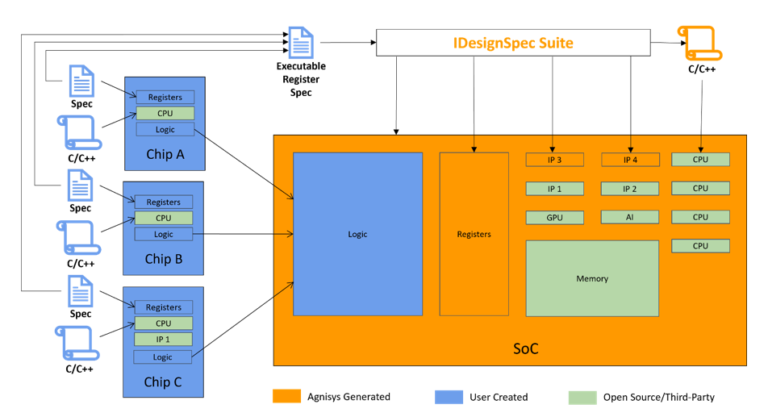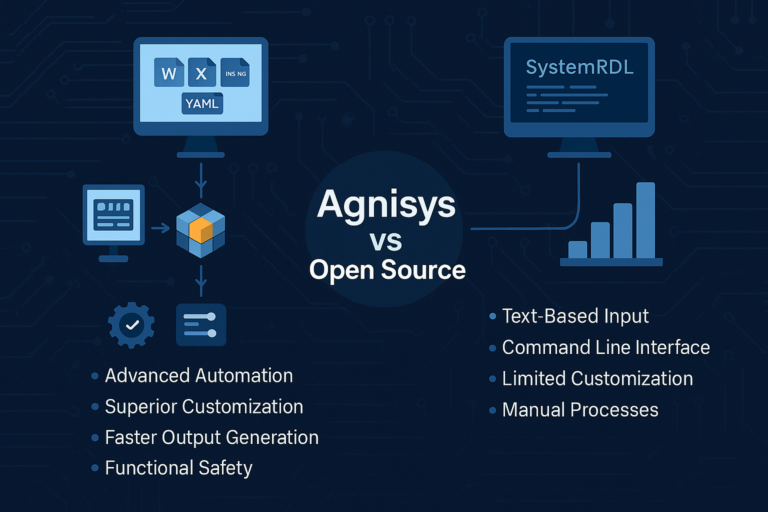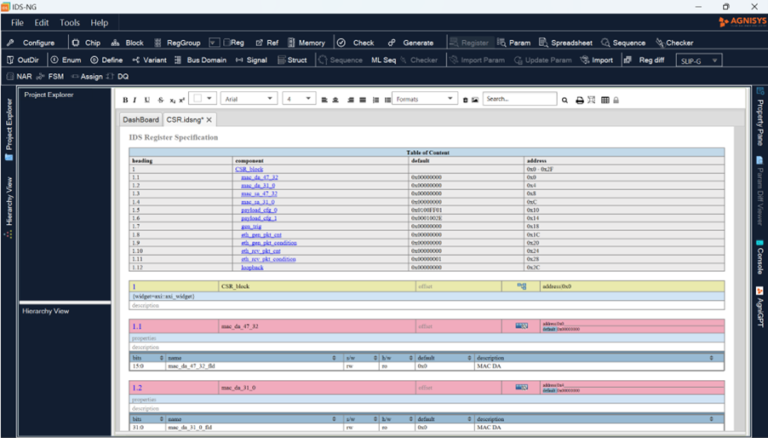SEMICONDUCTOR DESIGN AND VERIFICATION ARTICLES

Our Latest Blogs
I’ve been writing a lot about AI lately, but for some good reasons. AI seems to be dominating a...
If you ask people what defines a system-on-chip (SoC) design, you’ll probably get one of three responses. Many contend...
In today’s semiconductor industry, System-on-Chip (SoC) design has become increasingly complex. Modern SoCs integrate multiple intellectual property (IP) blocks...
Semiconductor development is one of the most dynamic industries in history. Change is constant, stemming from evolution in underlying...
The Complete One-Stop Solution for Modern SoC Design Challenges In the fast-paced world of semiconductor design, enterprises need robust, flexible...
Introduction IDesignSpec (IDS) suite of products can seamlessly integrate into your Vivado projects allowing for faster turnaround times. IDS can...
Join Agnisys for a technical deep dive into IDS-FPGA, a comprehensive solution that automates the end-to-end FPGA development process...
Hardware verification has always been the quiet bottleneck in chip development. For those working in the industry, it’s a...
A recent blog post looked at the impact artificial intelligence (AI) is having on chip development, focusing on register-transfer-level...














